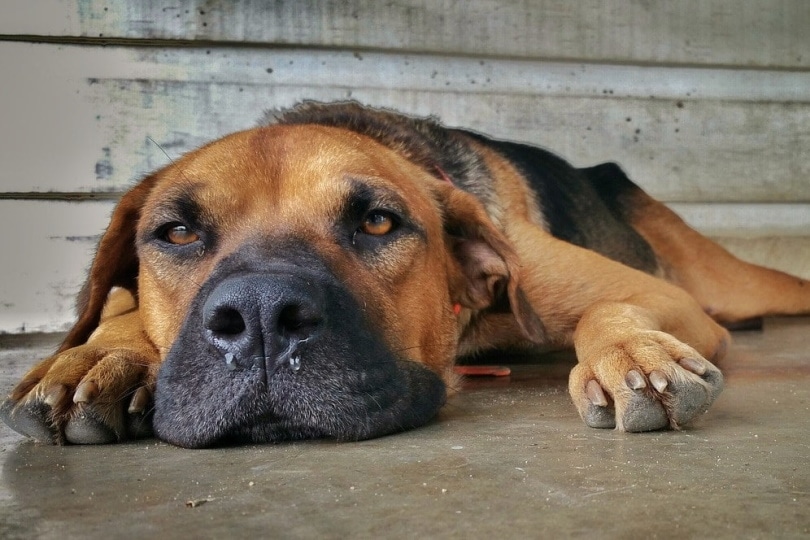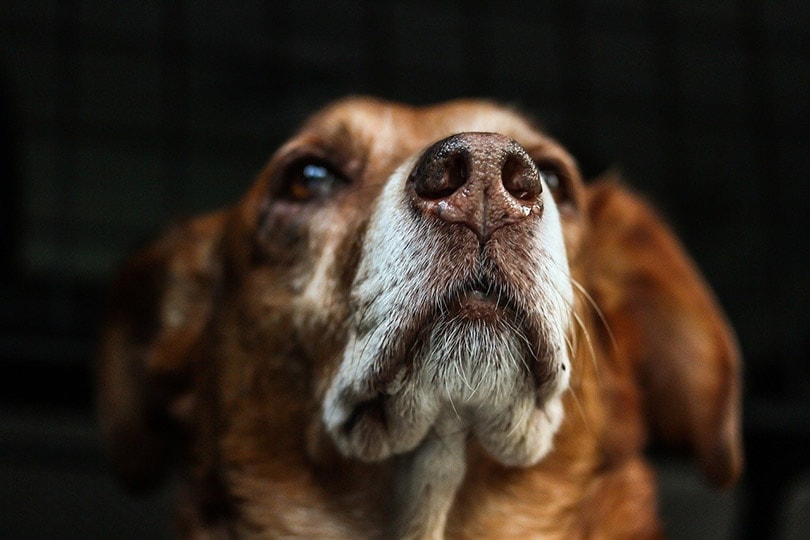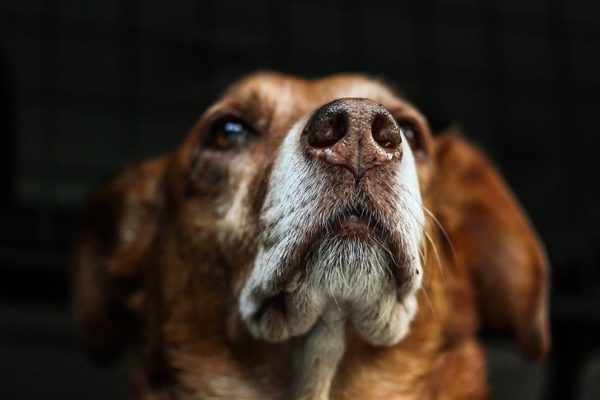We already know that a dog’s nose is a powerful tool. Humans have utilized the canine’s keen sense of smell to track down criminals, search for drugs, and locate cancerous tumors. The nose is considered one of the most sensitive parts of a dog’s body, especially the rhinarium, which is the furless area surrounding the dog’s snout. Two recent studies from Budapest and Lund University in Sweden reveal that dogs can sense heat through thermal receptors in their nose, likely in their rhinarium. Their discovery also helps to explain why a healthy dog nose is always cold and wet.
How Do Dogs Sense Heat?
The study¹ from Lund University in Sweden tested the ability of Golden Retrievers and Collies to choose between a neutral object and an item that was heated to the temperature of small prey, which is around 92ºF. To keep the study objective, a fan blew in the opposite direction of the dog to prevent them from relying on their sense of smell, and both objects were held a yard away from the dog’s face. The dogs consistently chose the heated object over the cold one, which proves that they sought the heated option when making their selection.
In a separate study¹, a research team from Budapest utilized magnetic resonance imaging (MRI) to highlight the canines’ brains when dogs were exposed to a temperature that was similar to the body heat of small prey. The left part of the somatosensory association cortex¹ became active during the process, which is the area of the brain that’s the most responsible for processing temperature. Their research results seemed to confirm the earlier study in Sweden, which tells us that dogs can register heat through their noses.
Of course, any area of skin can sense heat to a certain extent. We feel the hair on our arms raise when it’s cold, and our skin becomes warm if we’ve been sitting in the sun. However, researchers note that the canine’s rhinarium is more similar to an infrared sensor than our skin because of its high sensitivity to weak stimuli.

Why Is It Important for Dogs to Sense Heat?
Before they were domesticated, dogs hunted their prey in the wild like wolves. Having the ability to sense warmth on their cold noses strengthened their ability to track and kill small animals—even if their other senses were impaired. For example, a dog might not be able to see very well in a blizzard, but they could use their thermal sensors to track down a white rabbit that was camouflaged in the snow.
Sensing body heat may also help dogs locate their young if one of their puppies wanders away from the litter. Similarly, a puppy might use their thermal reading abilities to snuggle closer to their mother.
Why Should My Dog’s Nose Be Wet?
We’ve always heard that a dog’s nose should stay cold and wet, but until now we never knew exactly why. As it turns out, the cool and moist properties help it to act as an infrared sensor. Snouts are actually an indicator of your dog’s overall health. A dry nose¹ can be a sign that your dog is dehydrated, sunburned, or chapped from being out in extreme weather.
In addition to acting as a thermal detector, your dog’s nose also helps its body regulate temperature by being one of the only two parts of its body that sweats. Glands in their paws also release sweat. The moisture on their nose also lets scent particles cling to the surface for a better sniff. It’s like your dog is walking around with a wet mop pad on their snouts all day long, hoping to catch some intriguing smells.

In Conclusion
A dog’s nose does a lot more than boop us when they want food. Before they relied on humans to give them their daily portions, dogs used their noses as thermal navigators as they sought their prey. Nowadays, your dog still uses their nose to find a warm bowl of food, cool their body, and get a whiff of the world. A canine nose should always be cool and moist. If your dog’s nose dries out, make sure they are drinking plenty of water, and limit their exposure to harsh temperatures to prevent sunburn and skin chapping.
Featured Image Credit: PICNIC-Foto-Soest, Pixabay











